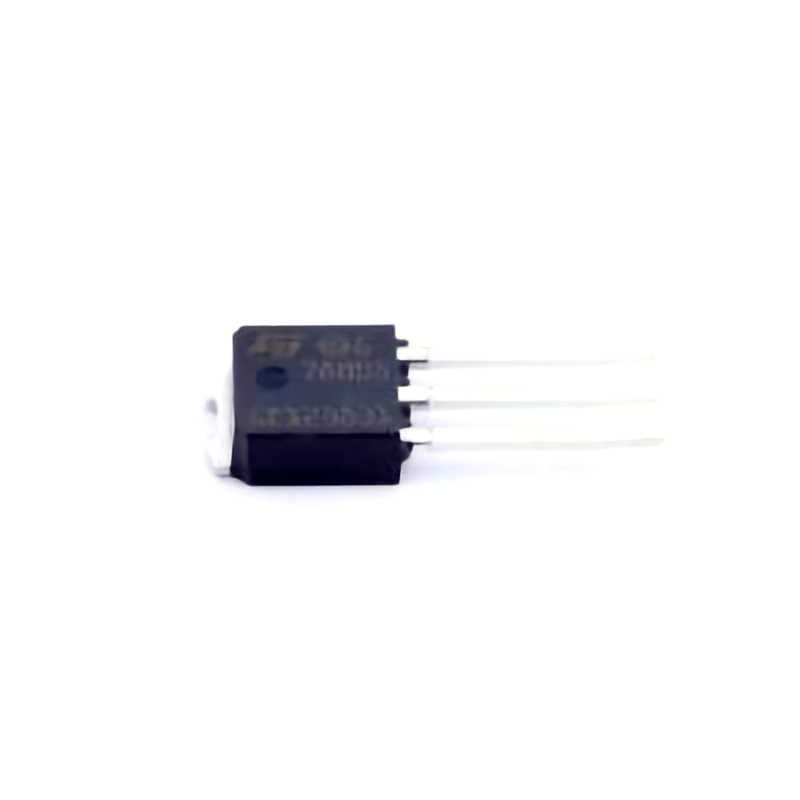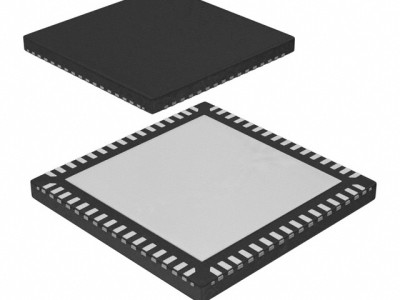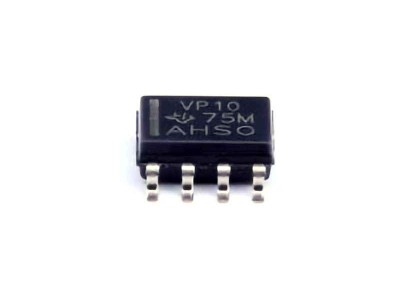
Understanding the L 78M05 CDT Voltage Regulator and Common Issues
The STMicroelectronics L78M05CDT is a versatile and widely used linear voltage regulator that provides a stable +5V output from a higher input voltage source. This 3-pin regulator is part of the L78Mxx series and is a great choice for Power ing low-power devices, microcontrollers, and other digital circuits that require 5V DC. Despite its reliability, the L78M05CDT may face certain issues during use, especially when incorporated into complex designs or when subjected to suboptimal operating conditions.
In this first part, we will explore the most common problems associated with the L78M05CDT and how to troubleshoot them effectively.
1. No Output Voltage
One of the most frustrating issues users face is the absence of an output voltage. The L78M05CDT is designed to provide a regulated 5V output, but if it fails to do so, it can leave your circuit inoperable. Several factors could contribute to this problem, including incorrect wiring, inadequate input voltage, or a faulty component.
Troubleshooting Steps:
Check the Input Voltage: The L78M05CDT requires an input voltage that is at least 7V (typically 8V to 35V) for proper regulation. If the input voltage is too low, the regulator will not be able to provide the required 5V output. Ensure that your power supply meets these voltage requirements.
Examine the Ground Connection: A poor or missing ground connection is a common cause of no output voltage. Ensure that the ground of the input power supply is properly connected to the ground of the L78M05CDT regulator and the rest of the circuit.
Test the Regulator with a Multimeter: Use a digital multimeter to check the output voltage at the regulator’s output pin. If no voltage is detected, the regulator may be damaged and might need to be replaced.
Verify External capacitor s: The L78M05CDT requires Capacitors at both the input and output pins to maintain stability. A missing or faulty capacitor can result in a lack of output voltage. A 0.33µF capacitor should be used on the input, and a 0.1µF capacitor on the output. Check for these components and ensure they are correctly rated and in place.
2. Overheating of the L78M05CDT
Overheating is a common issue, especially when the regulator is operating with a significant voltage difference between the input and output, or if it is supplying high currents to a load. The L78M05CDT operates by dissipating excess energy as heat, and if the thermal dissipation is inadequate, the device may overheat and shut down to protect itself.
Troubleshooting Steps:
Check the Power Dissipation: The power dissipated by the regulator can be calculated as ( P = (V{in} - V{out}) \times I_{load} ). If the input voltage is significantly higher than 5V, the regulator will dissipate more power in the form of heat. For example, with a 12V input and a 5V output, the regulator needs to drop 7V, and if the load draws 1A, the power dissipated will be 7W, which can lead to overheating.
Improve Cooling: Ensure that the L78M05CDT has sufficient cooling. Adding a heatsink to the regulator or improving airflow around the component can significantly reduce the temperature.
Reduce the Input Voltage: If possible, reduce the difference between the input and output voltages. Using a lower input voltage will reduce the amount of power the regulator needs to dissipate. Switching to a buck converter or a more efficient regulator may be beneficial in cases where heat is a persistent issue.
3. Unstable Output Voltage or Voltage Drop
An unstable output voltage or voltage drop is another common problem. When this happens, the output voltage fluctuates or falls below the expected 5V, which can lead to malfunctioning of connected circuits. This issue is typically caused by poor input conditions, inadequate filtering, or excessive load.
Troubleshooting Steps:
Check for Adequate Input Capacitors: Inadequate input capacitors can cause voltage fluctuations at the output. Ensure that a capacitor with the correct value (typically 0.33µF) is placed close to the input pin of the regulator.
Add Output Capacitors: Similarly, ensure that the output capacitor (usually 0.1µF) is present and properly connected. In some cases, increasing the capacitance slightly can improve stability, especially under load.
Verify the Load Current: Ensure that the load connected to the L78M05CDT is not exceeding the regulator’s current rating. The L78M05CDT can supply a maximum of 1A, but if the current exceeds this limit, the output voltage may drop. Consider using a more powerful regulator or spreading the load across multiple regulators if necessary.
Test for Excessive Ripple: Use an oscilloscope to check for excessive ripple or noise on the output. If significant ripple is present, try improving the filtering with larger capacitors or adding a low-pass filter.
4. Damaged Regulator
If none of the above troubleshooting steps resolve the issue, the L78M05CDT itself may be damaged. This can happen if the regulator has been subjected to overvoltage, excessive current, or poor thermal management.
Troubleshooting Steps:
Replace the Regulator: If all else fails, replace the L78M05CDT with a new one. Before replacing it, ensure that all other components in the circuit are functioning correctly to prevent the new regulator from being damaged in the same way.
Advanced Troubleshooting, Prevention, and Solutions for L78M05CDT
In this second part, we will dive deeper into more advanced troubleshooting methods for the L78M05CDT and offer suggestions for preventing common issues. Proper circuit design and maintenance can help to avoid many of the problems mentioned in Part 1 and ensure long-term reliability.
5. Overcurrent Protection and Handling
As with all voltage regulators, the L78M05CDT is limited by its maximum current output. Exceeding the regulator's current limit can cause overheating, voltage drop, and possible permanent damage. It’s important to design your circuit to prevent excessive current draw.
Solutions:
Use a Fuse or Current-Limiting Resistor: Adding a fuse in series with the input or output can protect the regulator from overcurrent situations. A current-limiting resistor at the input can also help prevent sudden surges of current that might damage the regulator.
Monitor Load Conditions: If your circuit is prone to varying loads, consider using a current sensing circuit or an overcurrent detection system to monitor the current and disconnect the load or trigger a warning in case of excessive current draw.
Choose Appropriate Capacitors: A large capacitor on the output can cause a high inrush current when the circuit is powered on, potentially damaging the regulator. Choose capacitors that are appropriate for your circuit's needs and ensure they are rated to handle such surges.
6. Choosing the Right Input Voltage
Selecting the correct input voltage for your L78M05CDT regulator is crucial for stable operation. If the input voltage is too high, the regulator will waste more energy in the form of heat, leading to overheating and reduced efficiency. On the other hand, if the input voltage is too low, the regulator will not be able to maintain the 5V output.
Solutions:
Optimize the Input Voltage: As mentioned previously, the L78M05CDT requires a minimum input voltage of around 7V, but 8V to 12V is typically ideal for efficiency and thermal performance. If your source voltage is higher, consider using a step-down regulator or a buck converter to reduce the input voltage before it reaches the L78M05CDT.
Use a Voltage Monitoring Circuit: Implementing a voltage monitoring circuit can help ensure that the input voltage stays within the recommended range. If the voltage falls below a certain threshold, the circuit can alert you or even shut down the regulator to prevent malfunction.
7. Circuit Design Tips for Enhanced Stability
The design of the surrounding circuitry can significantly affect the performance of the L78M05CDT. Simple measures such as proper grounding, decoupling capacitors, and layout optimization can help prevent many common problems.
Solutions:
Grounding Considerations: Proper grounding is essential for stable operation. Minimize the length of ground traces and make sure the ground path has low resistance to prevent voltage drops and noise.
Decoupling Capacitors: Add decoupling capacitors as close to the input and output pins of the L78M05CDT as possible. These help to filter high-frequency noise and stabilize the voltage.
PCB Layout Optimization: Ensure that the regulator’s input and output traces are wide enough to handle the current without excessive voltage drop. If possible, use a ground plane to improve the regulator's performance and reduce noise.
8. Prevention of Common Failures
Finally, taking preventive measures can go a long way in avoiding the most common issues associated with the L78M05CDT. Regular testing, careful component selection, and proper circuit maintenance are key to ensuring the reliability of your voltage regulator.
Prevention Tips:
Use Reliable Components: Choose high-quality capacitors, resistors, and other components to avoid issues like capacitor failure, which can lead to instability or voltage drops.
Test Under Load Conditions: Before deploying your circuit in a real-world application, test it under varying load conditions to ensure that the L78M05CDT is operating within its safe limits.
Monitor Temperature: If your application involves high currents or a significant difference between input and output voltages, monitor the temperature of the L78M05CDT regularly to ensure it doesn’t overheat.
By following these troubleshooting steps, solutions, and preventive measures, you can ensure the reliable operation of the L78M05CDT voltage regulator and enhance the overall performance of your electronics projects. With proper attention to detail and circuit design, the L78M05CDT can continue to be a dependable component for your power regulation needs.
If you're looking for models of commonly used electronic components or more information about L78M05CDT datasheets, compile all your procurement and CAD information in one place.
( Partnering with an electronic component supplier) sets your team up for success, ensuring that the design, production and procurement processes are streamlined and error-free. (Contact us) for free today.


